Items filtered by date: September 2025
Diabetes and Its Impact on Foot Health
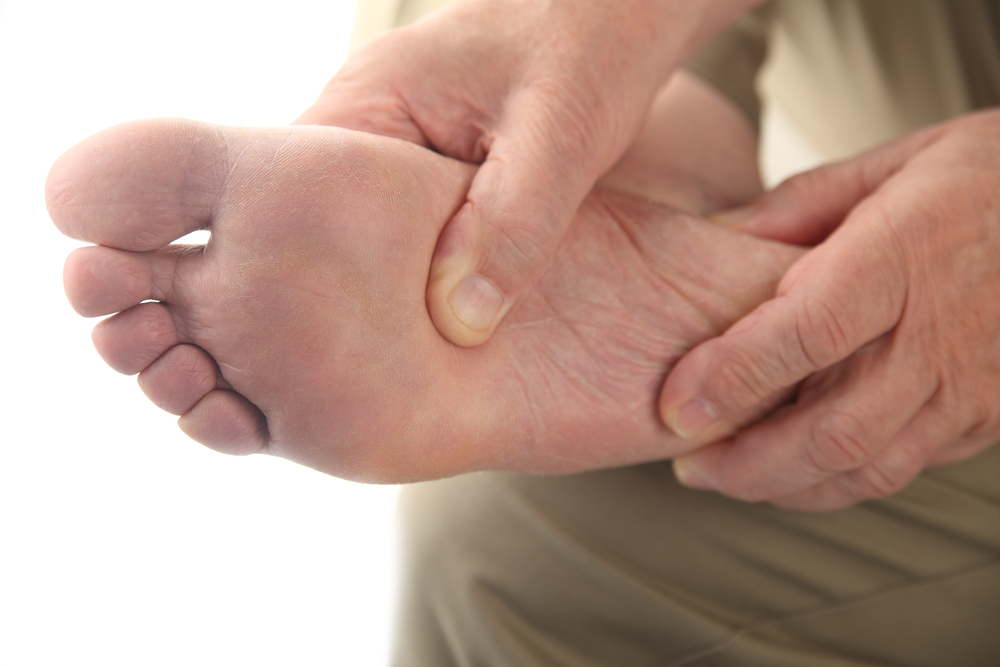
Diabetes can affect the feet in many ways, often starting with reduced circulation and nerve damage. Poor circulation makes it harder for blood to flow to the lower limbs, slowing the healing process of even the smallest cuts or blisters. Nerve damage, also known as neuropathy, may cause tingling, burning, or numbness in the feet, which makes it difficult to feel injuries or pressure spots. Without proper sensation, wounds may go unnoticed and become infected. Thickened skin, fungal nails, and dry skin are also more common in people with diabetes, further increasing the risk of complications. Preventive care is essential and includes daily foot inspections, wearing comfortable footwear, and regular professional checkups. If you live with diabetes and notice any changes in your feet, it is suggested that you schedule an appointment with a podiatrist for a complete evaluation and care plan.
Diabetic foot care is important in preventing foot ailments such as ulcers. If you are suffering from diabetes or have any other concerns about your feet, contact Renee Rodriquez, DPM from Foot Clinic of South Texas. Our doctor can provide the care you need to keep you pain-free and on your feet.
Diabetic Foot Care
Diabetes affects millions of people every year. The condition can damage blood vessels in many parts of the body, especially the feet. Because of this, taking care of your feet is essential if you have diabetes, and having a podiatrist help monitor your foot health is highly recommended.
The Importance of Caring for Your Feet
- Routinely inspect your feet for bruises or sores.
- Wear socks that fit your feet comfortably.
- Wear comfortable shoes that provide adequate support.
Patients with diabetes should have their doctor monitor their blood levels, as blood sugar levels play such a huge role in diabetic care. Monitoring these levels on a regular basis is highly advised.
It is always best to inform your healthcare professional of any concerns you may have regarding your feet, especially for diabetic patients. Early treatment and routine foot examinations are keys to maintaining proper health, especially because severe complications can arise if proper treatment is not applied.
If you have any questions, please feel free to contact our office located in Brownsville, TX . We offer the newest diagnostic and treatment technologies for all your foot care needs.
The Ankle and Tarsal Tunnel
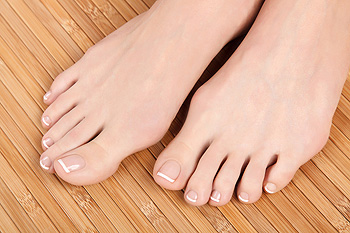 The tibial nerve is a nerve located in the foot. When this nerve endures abnormal pressure, it can cause tarsal tunnel syndrome. Tarsal tunnel syndrome is caused by inflammation surrounding the tarsal tunnel, which is located on the inside of the ankle, and can result in severe pain and discomfort. Tarsal tunnel syndrome can develop for various reasons, including diabetes or a possible tumor on the tarsal tunnel. A common symptom that patients may experience is pain in the sole of the foot. The pain may become worse when walking and standing for extended periods of time, and relief may be found when the affected foot is elevated. If you have pain in your feet, it is strongly suggested that you consult with a podiatrist for a proper diagnosis.
The tibial nerve is a nerve located in the foot. When this nerve endures abnormal pressure, it can cause tarsal tunnel syndrome. Tarsal tunnel syndrome is caused by inflammation surrounding the tarsal tunnel, which is located on the inside of the ankle, and can result in severe pain and discomfort. Tarsal tunnel syndrome can develop for various reasons, including diabetes or a possible tumor on the tarsal tunnel. A common symptom that patients may experience is pain in the sole of the foot. The pain may become worse when walking and standing for extended periods of time, and relief may be found when the affected foot is elevated. If you have pain in your feet, it is strongly suggested that you consult with a podiatrist for a proper diagnosis.
Tarsal tunnel syndrome can be very uncomfortable to live with. If you are experiencing tarsal tunnel syndrome, contact Renee Rodriquez, DPM of Foot Clinic of South Texas. Our doctor can provide the care you need to keep you pain-free and on your feet.
Tarsal Tunnel Syndrome
Tarsal tunnel syndrome, which can also be called tibial nerve dysfunction, is an uncommon condition of misfiring peripheral nerves in the foot. The tibial nerve is the peripheral nerve in the leg responsible for sensation and movement of the foot and calf muscles. In tarsal tunnel syndrome, the tibial nerve is damaged, causing problems with movement and feeling in the foot of the affected leg.
Common Cause of Tarsal Tunnel Syndrome
- Involves pressure or an injury, direct pressure on the tibial nerve for an extended period of time, sometimes caused by other body structures close by or near the knee.
- Diseases that damage nerves, including diabetes, may cause tarsal tunnel syndrome.
- At times, tarsal tunnel syndrome can appear without an obvious cause in some cases.
The Effects of Tarsal Tunnel Syndrome
- Different sensations, an afflicted person may experience pain, tingling, burning or other unusual sensations in the foot of the affected leg.
- The foot muscles, toes and ankle become weaker, and curling your toes or flexing your foot can become difficult.
- If condition worsens, infections and ulcers may develop on the foot that is experiencing the syndrome.
A physical exam of the leg can help identify the presence of tarsal tunnel syndrome. Medical tests, such as a nerve biopsy, are also used to diagnose the condition. Patients may receive physical therapy and prescriptive medication. In extreme cases, some may require surgery.
If you have any questions please contact our office located in Brownsville, TX . We offer the newest diagnostic and treatment technologies for all your foot and ankle needs.
Facts About Gout
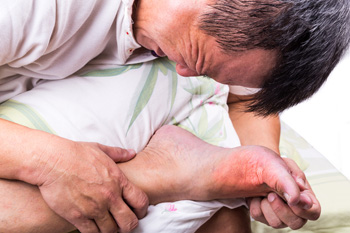
Gout is a type of arthritis that occurs when uric acid crystals accumulate in the joints, most commonly affecting the big toe. It can cause sudden and intense pain, swelling, redness, and warmth in the affected area, making walking or wearing shoes difficult. Causes include high levels of uric acid in the blood, dietary factors, genetics, and certain medical conditions. Risk factors involve obesity, high purine diets, alcohol consumption, and family history. A podiatrist can diagnose gout, recommend lifestyle modifications, prescribe medications to reduce uric acid levels, and provide strategies to manage pain and prevent flare ups. If you have intense pain in your big toe, it is strongly suggested that you are under the care of a podiatrist who can accurately diagnose and help you to manage this painful condition.
Gout is a foot condition that requires certain treatment and care. If you are seeking treatment, contact Renee Rodriquez, DPM from Foot Clinic of South Texas. Our doctor will treat your foot and ankle needs.
What Is Gout?
Gout is a type of arthritis caused by a buildup of uric acid in the bloodstream. It often develops in the foot, especially the big toe area, although it can manifest in other parts of the body as well. Gout can make walking and standing very painful and is especially common in diabetics and the obese.
People typically get gout because of a poor diet. Genetic predisposition is also a factor. The children of parents who have had gout frequently have a chance of developing it themselves.
Gout can easily be identified by redness and inflammation of the big toe and the surrounding areas of the foot. Other symptoms include extreme fatigue, joint pain, and running high fevers. Sometimes corticosteroid drugs can be prescribed to treat gout, but the best way to combat this disease is to get more exercise and eat a better diet.
If you have any questions, please feel free to contact our office located in Brownsville, TX . We offer the newest diagnostic and treatment technologies for all your foot care needs.
Understanding the Importance of Pronation
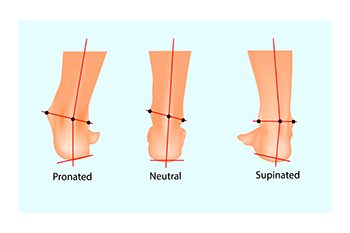
Pronation is the natural motion your foot makes as it rolls inward when walking or running, helping to absorb shock and distribute weight evenly. In neutral pronation, the heel strikes the ground first, the arch lowers slightly to cushion impact, and weight is smoothly transferred forward to push off the toes. This balanced motion keeps the feet and ankles aligned, supporting efficient movement. When overpronation occurs, the foot rolls too far inward, often placing excess strain on the arch, heel, and big toe. This can lead to plantar fasciitis or arch pain. Underpronation, also called supination, means the foot rolls outward with each step. This can increase stress on the smaller toes and outer edge of the foot. Both abnormal patterns may contribute to ankle instability, repetitive injuries, or uneven wear on the feet. A podiatrist can evaluate your gait, identify pronation issues, and recommend proper treatment. If you are experiencing foot pain that may be linked to your gait, it is suggested that you make an appointment with a podiatrist for a diagnosis and treatment.
If you have any concerns about your feet, contact Renee Rodriquez, DPM from Foot Clinic of South Texas. Our doctor can provide the care you need to keep you pain-free and on your feet.
Biomechanics in Podiatry
Podiatric biomechanics is a particular sector of specialty podiatry with licensed practitioners who are trained to diagnose and treat conditions affecting the foot, ankle and lower leg. Biomechanics deals with the forces that act against the body, causing an interference with the biological structures. It focuses on the movement of the ankle, the foot and the forces that interact with them.
A History of Biomechanics
- Biomechanics dates back to the BC era in Egypt where evidence of professional foot care has been recorded.
- In 1974, biomechanics gained a higher profile from the studies of Merton Root, who claimed that by changing or controlling the forces between the ankle and the foot, corrections or conditions could be implemented to gain strength and coordination in the area.
Modern technological improvements are based on past theories and therapeutic processes that provide a better understanding of podiatric concepts for biomechanics. Computers can provide accurate information about the forces and patterns of the feet and lower legs.
Understanding biomechanics of the feet can help improve and eliminate pain, stopping further stress to the foot.
If you have any questions please feel free to contact our office located in Brownsville, TX . We offer the newest diagnostic and treatment technologies for all your foot and ankle needs.
We Can Treat Your Foot or Ankle Pain
Causes of Poor Foot Circulation
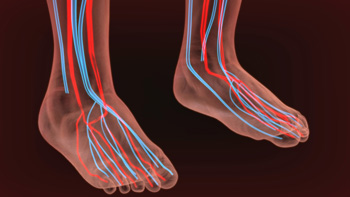
Poor circulation in the feet occurs when blood flow is reduced, preventing tissues from receiving enough oxygen and nutrients. This condition can lead to discomfort and complications, if left untreated. Causes include peripheral artery disease, diabetes, smoking, and sitting for long periods of time. Symptoms may involve numbness, tingling, cold feet, swelling, or slow healing wounds. Risk factors include age, high cholesterol, obesity, and a sedentary lifestyle. A podiatrist can evaluate circulation, identify underlying issues, and recommend treatments such as lifestyle changes, footwear guidance, or medical treatments to improve blood flow. If you are experiencing signs of poor circulation in your feet, it is suggested that you consult a podiatrist who can help you to manage this condition.
While poor circulation itself isn’t a condition; it is a symptom of another underlying health condition you may have. If you have any concerns with poor circulation in your feet contact Renee Rodriquez, DPM of Foot Clinic of South Texas. Our doctor will treat your foot and ankle needs.
Poor Circulation in the Feet
Peripheral artery disease (PAD) can potentially lead to poor circulation in the lower extremities. PAD is a condition that causes the blood vessels and arteries to narrow. In a linked condition called atherosclerosis, the arteries stiffen up due to a buildup of plaque in the arteries and blood vessels. These two conditions can cause a decrease in the amount of blood that flows to your extremities, therefore resulting in pain.
Symptoms
Some of the most common symptoms of poor circulation are:
- Numbness
- Tingling
- Throbbing or stinging pain in limbs
- Pain
- Muscle Cramps
Treatment for poor circulation often depends on the underlying condition that causes it. Methods for treatment may include insulin for diabetes, special exercise programs, surgery for varicose veins, or compression socks for swollen legs.
As always, see a podiatrist as he or she will assist in finding a regimen that suits you. A podiatrist can also prescribe you any needed medication.
If you have any questions, please feel free to contact our office located in Brownsville, TX . We offer the newest diagnostic and treatment technologies for all your foot care needs.

